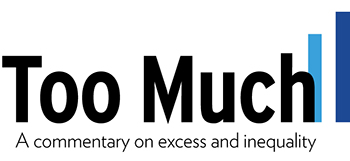The growing inequality of the last three decades rests on a flim-flam economic perspective on how the world works. But neutralizing this flim-flam, even in an Obama Age, will be no pushover.
Jonathan Chait, The Big Con: The True Story of How Washington Got Hoodwinked and Hijacked by Crackpot Economics. Houghton Mifflin. 294 pp..
By Sam Pizzigati
Jonathan Chait, a senior editor at the New Republic, probably welcomes Barack Obama’s victory as much as anyone. But you won’t find Chait rushing to dash off an obituary of the Reaganism Obama challenged during his campaign. Not just yet. Chait has seen Reaganism — the notion that we owe our prosperity to policies that keep rich people rich — pronounced dead too many times before.
 In early 1984, for instance, the polls had Reagan double-digits behind the Democratic candidates contesting his re-election. And pundits also pronounced Reaganism dead in 1992, after Democrats swept his heir, the first President Bush, out of the White House — and then again, in the late 1990s, when the public “rebelled” against the Clinton impeachment.
In early 1984, for instance, the polls had Reagan double-digits behind the Democratic candidates contesting his re-election. And pundits also pronounced Reaganism dead in 1992, after Democrats swept his heir, the first President Bush, out of the White House — and then again, in the late 1990s, when the public “rebelled” against the Clinton impeachment.
None of these moments, in the end, would break the Reaganite lockgrip on America’s political discourse. Public policy debates since the early 1980s have repeatedly played out within a Reaganite frame.
“To help the poor and middle classes,” as Reaganomics flack George Gilder wrote in 1981, “one must cut the taxes of the rich.”
Before the mid 1970s, no grown-up in American political life — no opinion leader in either Republican or Democratic Party policy circles — subscribed to anything close to this nutsy doctrine. Today, this crank economics strikes movers and shakers throughout Washington as essential conventional wisdom.
Indeed, John McCain couldn’t believe his luck when his rival for the White House dared to defend the notion of “spreading the wealth.” Barack Obama, the McCain team gleefully believed, had committed the ultimate political gaffe.
How did this transformation in elite Washington thought take place? Jonathan Chait explains how in The Big Con, an entertaining narrative that names names and shares one fascinating anecdotal piece of history after another.
But why do we need a history of Reaganism’s rise when Reaganism now seems spent? We need this book because we need to understand how powerful a hold Reaganite assumptions still have on our national political psyche, even among careful critics of Reaganism like Jonathan Chait.
Reaganomics, says Chait, has “at its core a central insight that does have a ring of plausibility.” Tax rates on the rich can go too high, he goes on to note, citing “the several decades after World War II” as an example. For most of these years, the tax rate on income over $400,000 stood at 91 percent.
“Nearly every contemporary economist,” writes Chait, would call this rate too high. That’s true. Most contemporary economists do feel that Eisenhower-era tax rates on the rich ran too high. But this consensus reflects the political legacy of the Reagan era, not the economic evidence.
Chait himself acknowledges that America’s years of high taxes on the rich saw “a massive boom, fueling rapid growth in living standards across the board.”
The post-war boom, Chait concludes, came “despite” Ike’s high tax rates on the rich. Maybe. Or maybe those steep tax rates on the rich helped nurture an economy of social solidarity that worked for everyone.
Thoughtful current-day analysts like Jonathan Chait haven’t yet become willing to ponder this latter possibility. Reaganism won’t truly be dead until they do.
Sam Pizzigati, an associate fellow at the Washington, D.C.-based Institute for Policy Studies, edits Too Much, the online weekly on excess and inequality.



Discussion
No comments for “Reaganism’s Rise — and Resiliency”